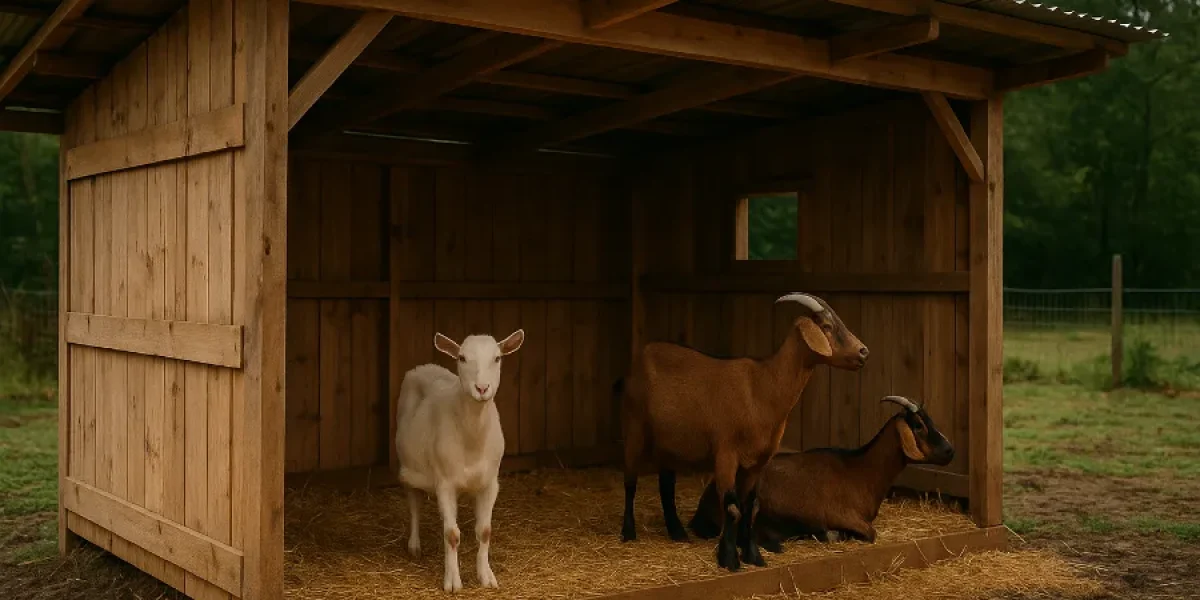If you’re anything like me, you treasure every moment your goats spend in their little home—and you also know that a damp, dirty environment is a recipe for trouble. That’s why learning how to keep goat shelters dry and parasite-free is one of the most valuable lessons any goat keeper can master. A proper goat shelter isn’t just a roof and four walls—it’s the foundation of good goat health, comfort, and productivity.
Smart Goat Housing: Building and Designing the Ideal Shelter for Goats
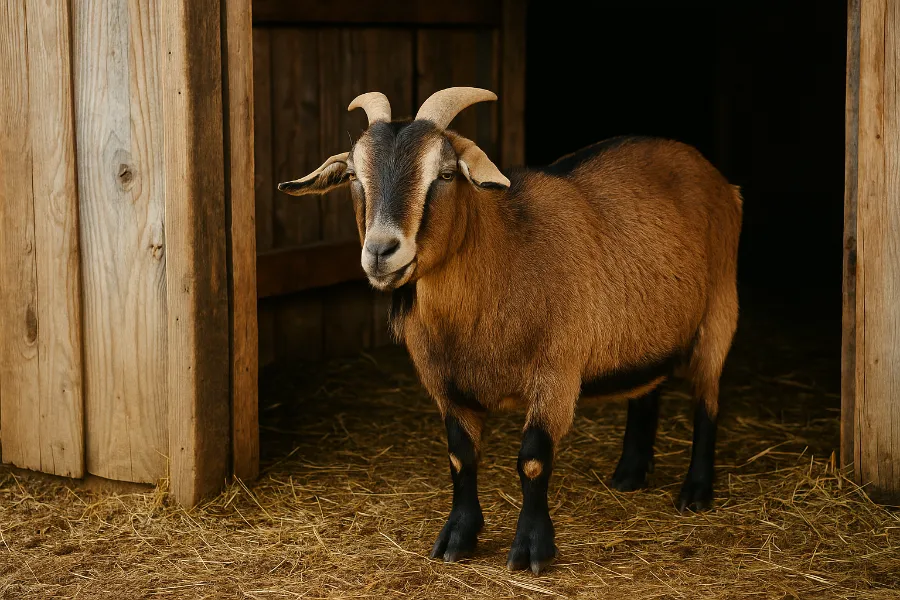
When I first started out with my herd, I learned quickly: goat housing matters more than you think. The layout, drainage, ventilation, and bedding choices all influence whether your shelter becomes a haven or a headache. Here are the key features that define smart goat housing:
- Elevation and drainage: Build your pen on slightly raised ground so water doesn’t pool underfoot. Even a small slope helps moisture run away from the barn area.
- Flooring and bedding: Packed dirt with deep straw, gravel with a liner beneath, or concrete with rubber mats all work—just make sure bedding stays dry.
- Ventilation without drafts: Goats handle cold better than dampness. Cross-ventilation keeps air moving and bedding dry.
- Extended eaves and gutters: Roof overhangs and gutters divert rainwater away from the shelter footprint, keeping the interior clean and mud-free.
- Sunlight access: Morning sunlight is nature’s disinfectant. It dries bedding and kills bacteria naturally.
Proper goat housing is your first line of defense. Once built correctly, all that’s left is keeping it clean and dry every day.
Daily Goat Care Routines That Keep the Shelter Clean, Dry, and Comfortable
Goat care inside the shelter is as important as feeding and health checks. I treat my cleaning routines as part of the goats’ overall wellness. Here’s what that looks like:
- Each morning, I remove manure and any damp bedding from sleeping areas.
- I keep feeders and waterers raised off the ground and scrub waterers daily.
- After every rain, I inspect the roof, corners, and walls for leaks or damp patches.
- Ventilation stays open but never drafts directly onto the goats.
- During humid months, I sprinkle diatomaceous earth or hydrated lime beneath fresh bedding—it keeps moisture and parasites in check.
Small habits add up. A dry shelter today means fewer health issues tomorrow.
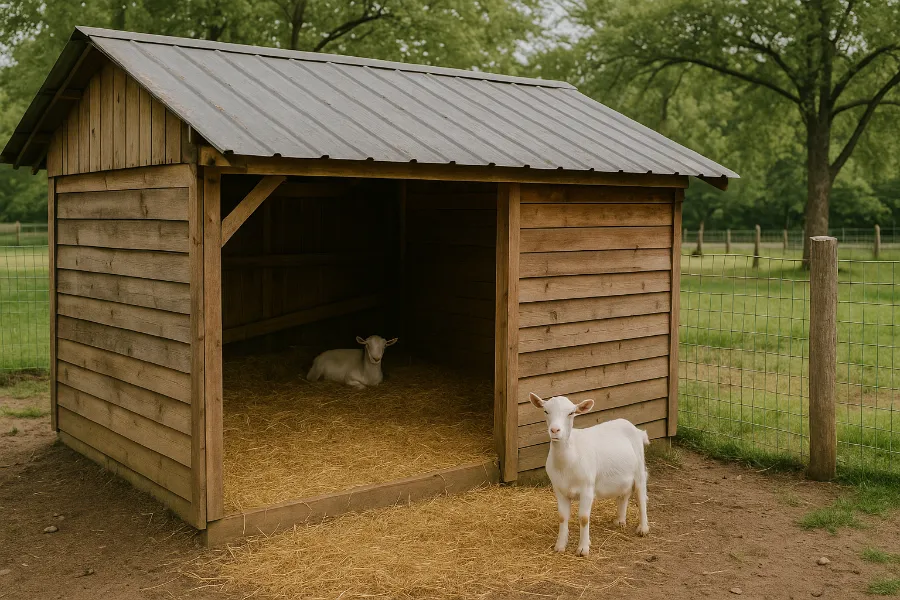
Goat Parasites and How Shelter Hygiene Can Help Control Them
Parasites are the invisible battle every goat keeper faces. But most of them thrive only in damp, dirty environments. That means a dry, well-managed goat shelter is one of your strongest tools in parasite control.
Here are some techniques I rely on:
- Avoid overcrowding. Too many goats in one space increases manure moisture and parasite risk.
- Feed and water off the ground to prevent contamination.
- Quarantine new goats for at least two weeks to avoid introducing external or internal parasites.
- Rotate grazing areas every few weeks to break parasite life cycles outside the barn.
- Keep bedding dry and fluffy—parasite larvae need moisture to survive.
By integrating these habits, you drastically reduce the parasite load in your herd without overusing chemical treatments.
Inside the Goat Barn: Cleaning Routines and Structural Maintenance
The goat barn is where all your hard work pays off—or falls apart. Cleanliness determines whether your goats stay healthy through the year.
Here’s how I keep my barn functional and fresh:
- Once a week, rake the bedding and remove heavily soiled areas.
- Once a month, strip all bedding and wash the floors and walls with a vinegar-water mix.
- Check every corner and vent for mold, moisture, or weak boards.
- Keep tools organized—shovels, rakes, lime, and spare bedding ready for quick cleanups.
A tidy goat barn is not about appearances—it’s about eliminating moisture, which is where every major problem begins.
Goat Farming Success Starts with a Clean Shelter
When it comes to goat farming, healthy goats equal higher productivity. Goats that sleep in a dry, parasite-free environment put more energy into growth and milk production instead of fighting illness.
Clean shelter management improves:
- Milk yield: Goats produce better under low-stress conditions.
- Herd longevity: Less disease means longer, more productive lifespans.
- Breeding success: Strong, parasite-free goats are better breeders.
- Operational efficiency: A clean shelter means fewer vet calls and lower costs.
If you want consistent success in goat farming, start by investing time into your shelter hygiene system.
Livestock Shelter Best Practices: Lessons That Apply Beyond Goats
Many of the same strategies that work for goats apply to any livestock shelter. Whether it’s sheep, chickens, or pigs, the basic rule stays the same—dryness is health.
Here are a few best practices that carry over:
- Keep drainage flowing naturally away from the shelter.
- Use absorbent, renewable bedding that can be composted.
- Maintain airflow and avoid stagnant air pockets.
- Allow sunlight to reach bedding areas for natural drying and warmth.
- Rotate livestock to avoid cross-contamination between species.
A well-maintained livestock shelter supports a healthier, more resilient farm ecosystem.
Composting Manure Properly to Support a Cleaner Goat Shelter
You can’t talk about clean shelters without mentioning composting manure. Improper manure management leads to odor, flies, and parasites creeping back into your shelter.
Here’s my simple composting method:
- Build a manure pile at least 100 feet from the goat shelter.
- Layer manure with straw or wood shavings so it heats above 130°F—heat kills parasite eggs.
- Turn the pile weekly to keep it aerated.
- Let compost cure for at least three months before spreading it on gardens or fields.
Composting transforms waste into nutrient-rich soil while preventing parasites from recycling back into the barn.
Hoof Health and Its Connection to a Dry Goat Shelter
I once underestimated how closely hoof health is tied to shelter management. Wet, muddy environments soften hooves and lead to infections like hoof rot.
Here’s how to stay ahead of it:
- Trim hooves every 4–6 weeks to prevent cracks and moisture buildup.
- Keep floors dry and provide raised resting platforms.
- Sprinkle lime or sulfur powder in high-traffic areas to kill bacteria.
- If any goat limps or shows odor from hooves, inspect bedding and drainage immediately.
Healthy hooves start with dry, clean shelter conditions. It’s another reason why moisture control matters so much.
Connected Daily, Monthly, and Yearly Shelter Maintenance Checklists
Below is the connected cleaning system I’ve developed over time. Each level builds on the one before it, creating a self-sustaining routine that keeps the shelter dry and parasite-free year-round.
Daily Goat Shelter Maintenance Checklist
- Remove manure and wet bedding from all areas.
- Rake the top bedding layer and add fresh straw or shavings if needed.
- Scrub waterers and feeding areas to avoid mold and bacteria.
- Inspect for roof leaks or damp corners.
- Ensure vents are open and circulating air properly.
- Observe goats’ posture, coat, and eyelid color for early parasite signs.
Goal: Stop parasite eggs before they hatch by maintaining consistent dryness and hygiene.
Monthly Goat Shelter Deep Cleaning Checklist
- Remove all bedding completely and wash floors and walls with vinegar or mild disinfectant.
- Let everything dry out for several hours before re-bedding.
- Dust floor and wall edges with diatomaceous earth.
- Clean gutters, drainage lines, and downspouts.
- Rotate bedding materials for the season.
- Inspect goats for external parasites and treat as necessary.
- Turn the compost pile to ensure proper heat and airflow.
Goal: Reset the environment and remove any lingering larvae or bacteria that daily routines miss.
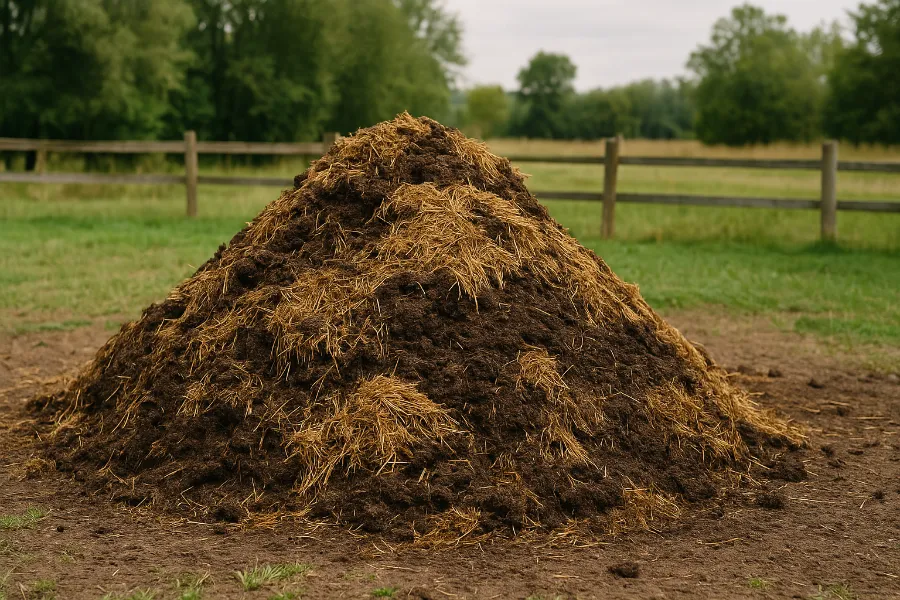
Yearly Goat Shelter Structural Maintenance Checklist
- Inspect the shelter for repairs: roof, walls, and flooring.
- Add new gravel or regrade the area for better drainage.
- Pressure wash and reseal surfaces if needed.
- Reassess ventilation, airflow, and sunlight exposure.
- Conduct a herd fecal test to monitor parasite levels.
- Adjust your grazing rotation plan for the upcoming year.
- Evaluate your compost site to ensure it’s still located safely away from the barn.
Goal: Strengthen the shelter structure and refresh systems for a new year of protection and comfort.
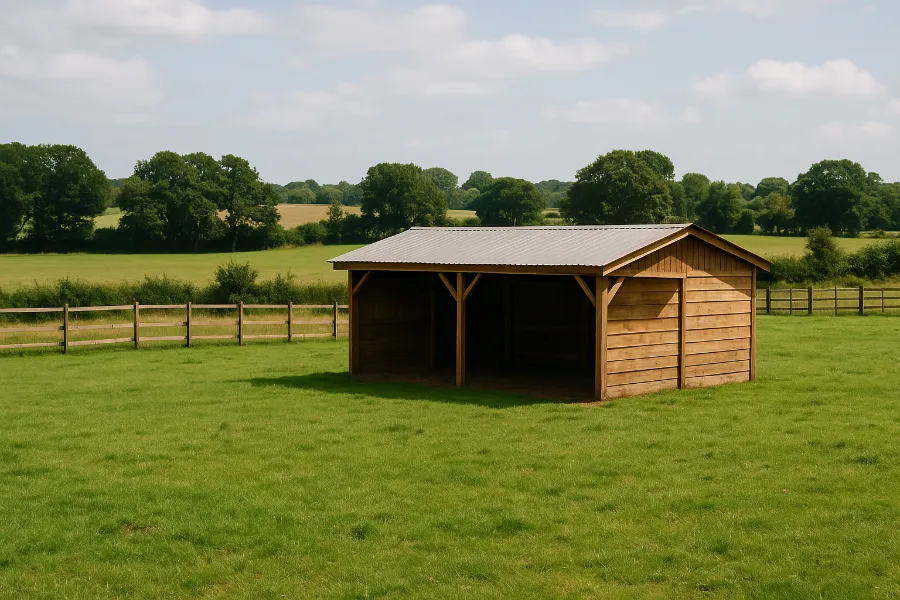
Final Thoughts on Building a Healthier, Parasite-Free Goat Shelter
Through years of trial and adjustment, I’ve learned that a goat shelter is the heart of herd health. It’s not about spending more—it’s about working smarter: better drainage, smarter bedding, natural airflow, and consistency.
When you design your goat housing carefully, stay on top of daily goat care, prevent goat parasites naturally, and manage manure and hoof health strategically, your shelter becomes a true health system.
Dry bedding. Clean air. Structured routines. That’s how you keep goat shelters dry, clean, and parasite-free—year after year.
FAQs
Raise the shelter floor slightly and ensure good drainage around the structure. Use deep, absorbent bedding and extend roof eaves or gutters to divert rainwater away.
Gravel, packed dirt with dry bedding, or concrete with rubber mats all work well. The key is ensuring proper drainage and regular cleaning to prevent moisture buildup.
Remove manure and wet bedding daily, do a full clean monthly, and perform a deep structural inspection yearly. Consistency keeps parasites from multiplying.
Keep bedding dry, sprinkle diatomaceous earth or hydrated lime under fresh litter, and rotate pastures regularly. Sunlight and airflow are natural parasite deterrents.
Proper composting kills parasite eggs and prevents contamination near the shelter. It also creates nutrient-rich fertilizer for gardens or pastures.
Watch for damp bedding, musty odors, coughing, or pale eyelids. These indicate moisture, ammonia buildup, or possible parasite infestations.
Wet, dirty flooring softens hooves and leads to infections. Keeping the shelter dry, trimming regularly, and providing raised platforms maintain healthy hooves.

